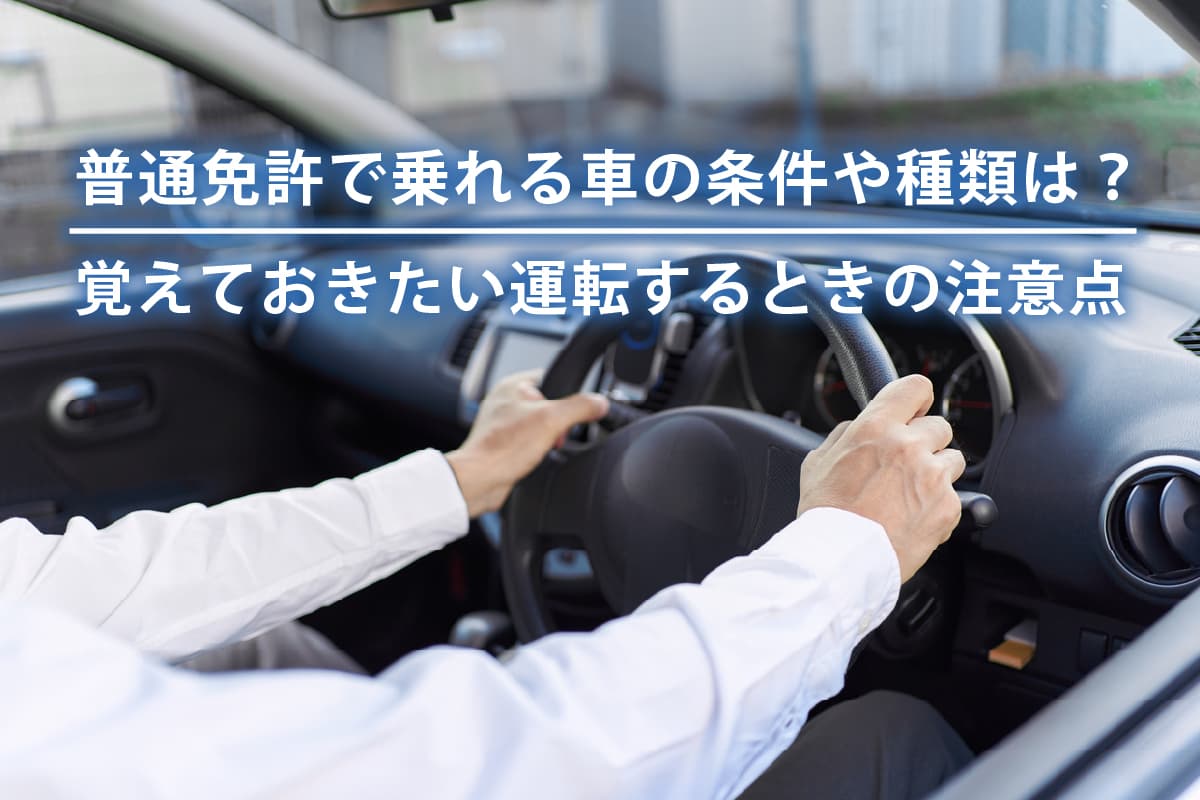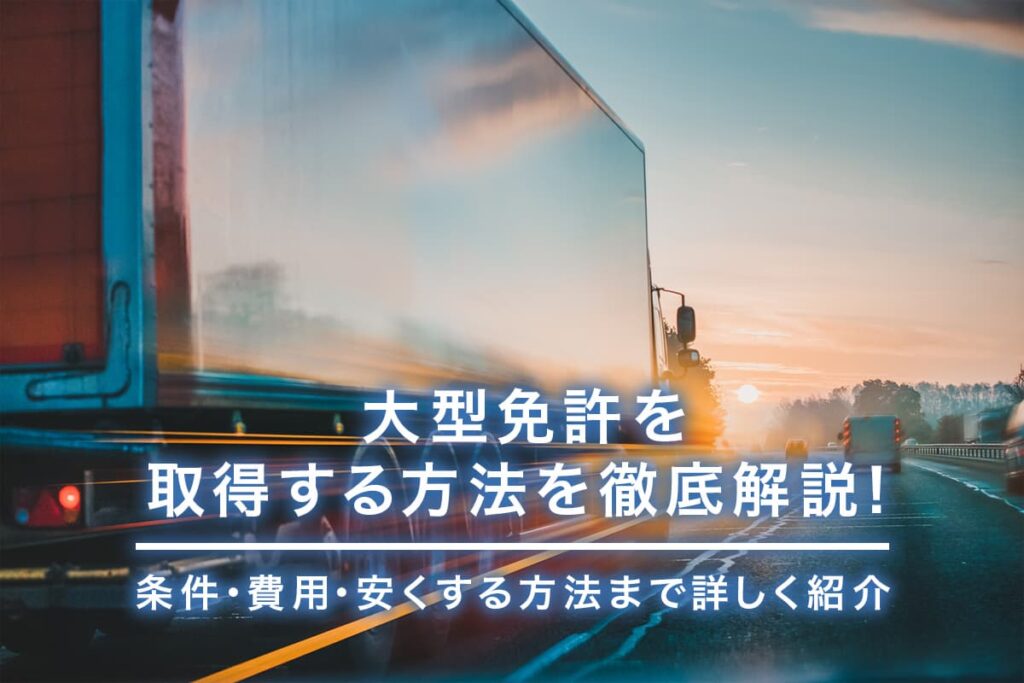普通免許で乗れる車の条件や種類をどこまで把握していますか?せっかく試験に合格しても、希望する車に乗れないのでは意味がありません。これからの仕事や生活で支障がでたり、購入する車の変更が必要になったりするでしょう。
そこで本記事では、普通免許で乗れる車の種類や条件、運転するときの注意点を紹介していきます。技術的には運転できても、道路交通法を守っていないと犯罪となり、罰則を科せられます。ぜひ参考にして、これから取得する運転免許の種類の参考にしてください。
普通免許で乗れる車の条件

普通免許で乗れる車の条件には、車両総重量と最大積載量、定員の3つがあります。車両総重量は、車本体の重量に加え人や荷物が載ったときの合計です。最大積載量は、車両総重量から車本体と乗車定員の重量を引いた重さです。
これまで道路交通法は何度も変更があり、普通免許を取得した時期によって、これらの条件は次の3つにわかれています。
- 2017年3月12日以降に取得した場合
- 2007年6月2日〜2017年3月11日の間に取得している場合
- 2007年6月1日以前に取得している場合
各取得時期での条件の違いを詳しく解説していきます。
2017年3月12日以降に取得した場合
2022年11月時点で、これから普通免許を取得する人が乗れる車の条件は、次の通りです。
- 車両総重量は3.5トン未満
- 最大積載量は2.0トン未満
- 定員は10人以下
車両総重量や最大積載量は、道路を損傷せず安全に運転できるように定められた条件です。車両総重量の計算では、乗車定員一人当たり55kgで計算されます。10人乗れる車の場合、乗車定員だけで0.55トン、車両重量は乗る車の種類によって変わり、重いものだと2トンを超えます。車のスペックは事前に把握しておき、車両総重量を超えないようにしてください。
また、普通免許での最大積載量は超えていなくとも、車の種類ごとにメーカーが定めた
積載重量の目安があるので併せて注意しましょう。
2007年6月2日〜2017年3月11日の間に取得している場合
普通免許の取得時期が2007年6月2日〜2017年3月11日の間の場合、条件は次の通りです。
- 車両総重量は5.0トン未満
- 最大積載量は3.0トン未満
- 定員は10人以下
2017年3月12日以降より、車両総重量は1.5トン、最大積載量は1トンだけ上限が広いです。定員の上限は変わらず10人以下のままです。2022年11月現在で、同等の条件の車を運転する場合、2017年3月12日に新設された、準中型免許の取得が必要になります。普通免許の取得より期間は長く、費用は高くなるケースが多くなっています。
普通免許も準中型免許も受験資格は同じのため、運送業や建設業で働く予定の人は、準中型免許の取得を検討したほうが仕事で可能な業務の幅が広がるでしょう。
2007年6月1日以前に取得している場合
普通免許の取得時期が2007年6月1日以前の場合、条件は次のようになっています。
- 車両総重量は8.0トン未満
- 最大積載量は5.0トン未満
- 定員は10人以下
定員の上限は変わりませんが、車両総重量や最大積載量は、2017年3月12日以降より2倍以上違います。2022年11月現在で車両総重量が8トン未満の車を運転するには準中型免許より一つ上の中型免許が必要です。中型免許は普通免許と受験資格が異なり、20歳以上で2年以上の免許期間を求められます。
普通免許で乗れる車の種類
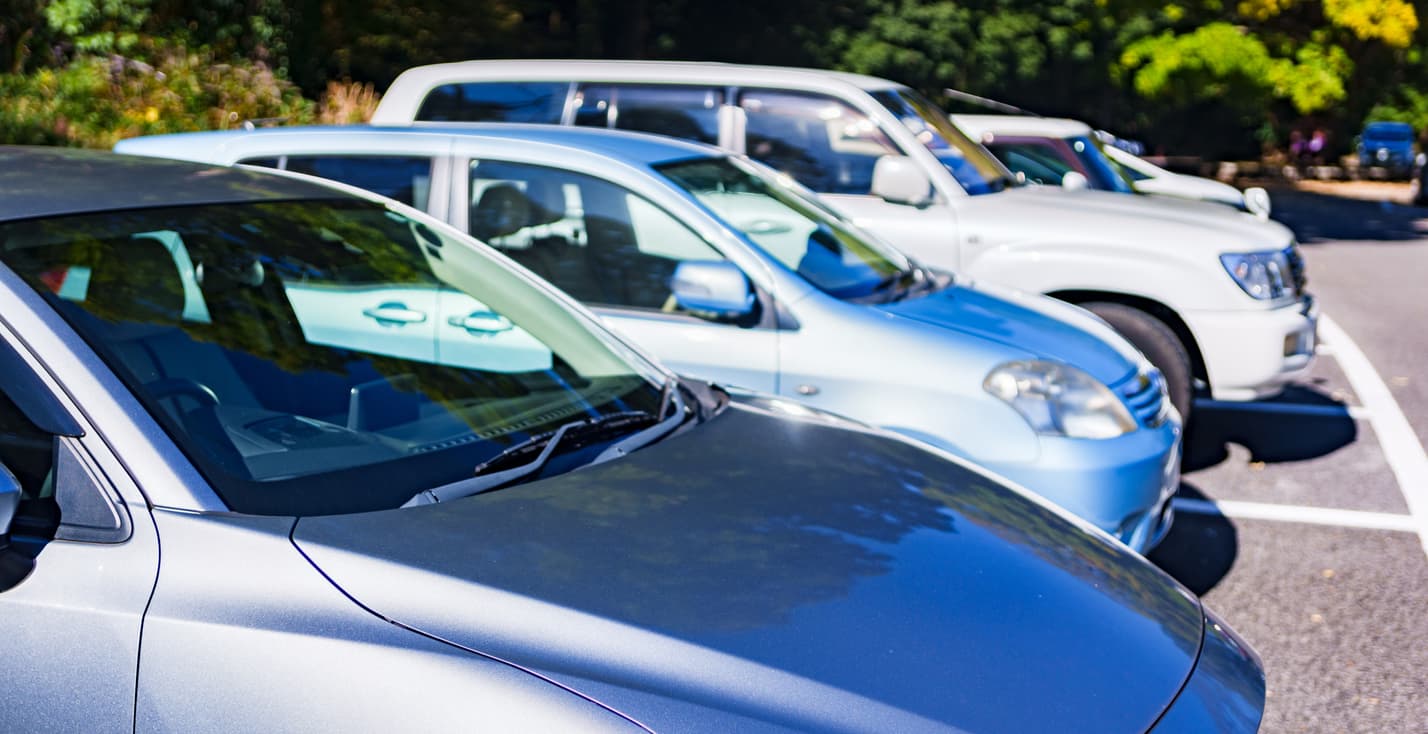
普通免許で乗れる車は次の3種類です。
- 普通自動車
- 小型特殊自動車
- 原動機付自転車
それぞれどのような特徴の車なのか、詳しく解説します。
普通自動車
普通自動車とは、2017年3月12日以降の普通免許で乗れる車両総重量や最大積載量、定員を満たす車で、ショベルやロードローラーといった作業用の特殊なものは除きます。一人乗りの小型のものや4人以下の軽自動車も、普通自動車に含まれます。
普通自動車にはATとMTの2種類があり、AT限定の普通免許を取得する場合はATしか乗ることはできません。日本で販売される多くの普通自動車はATで、MTが運転できなくても日常生活に支障はでないでしょう。しかし、仕事で社用車を運転するときや、外車を購入予定、海外旅行で車を運転したいときは、MTも運転できたほうが良いでしょう。ATとは限らず、必要なときに乗れないと困ってしまいます。
また普通自動車でも、タクシーのように料金を得て客を乗せる職業では、普通免許だと法律違反になります。普通二種免許というものが必要で、普通免許を取得していて、満21歳以上で3年以上の運転経歴が必要です。
小型特殊自動車
小型特殊自動車とは、工場・作業所や農耕作業で使われる車で次のものがあります。
| 工場・作業所向け | 農耕作業向け | |
| 小型特殊自動車の条件 |
|
最高時速35m以下 |
| 小型特殊自動車の例 |
|
|
上記の例で紹介した中で、フォークリフトやロータリー除雪自動車は、普通免許で運転はできても作業まではできません。別途技術講習を受けて資格を取得してください。
またこれらの小型特殊自動車は、農家などで私有地だからと、普通免許を取得する前に運転経験がある人がいるかもしれません。しかし私有地でも他の人が立ち入れる場所だと、道路交通法が適用されます。人が通る可能性があるところでは、無免許での運転は避けましょう。
原動機付自転車
原動機付自転車(原付)とは、道路運送車両法で125cc以下の原動機が付いた二輪車を指します。原動機の排気量による区分で、車輪が3つや4つの場合でも原付に該当します。
普通免許で適用される道路交通法では、50cc以下の原付(原付一種)だけが運転可能です。50cc越え125cc以下は原付二種と分類され、以下の免許がないと運転してはいけません。
- 小型限定普通二輪免許
- AT小型限定普通二輪免許
- 普通二輪免許
- 大型二輪免許
電動スクーターの場合は、排気量の変わりに出力(kW)が使われ、普通免許だと0.6kW以下のものならば運転できます。エンジンでも電動でも、普通免許で運転するときは、排気量や出力に注意しましょう。
普通免許で乗れるトラック
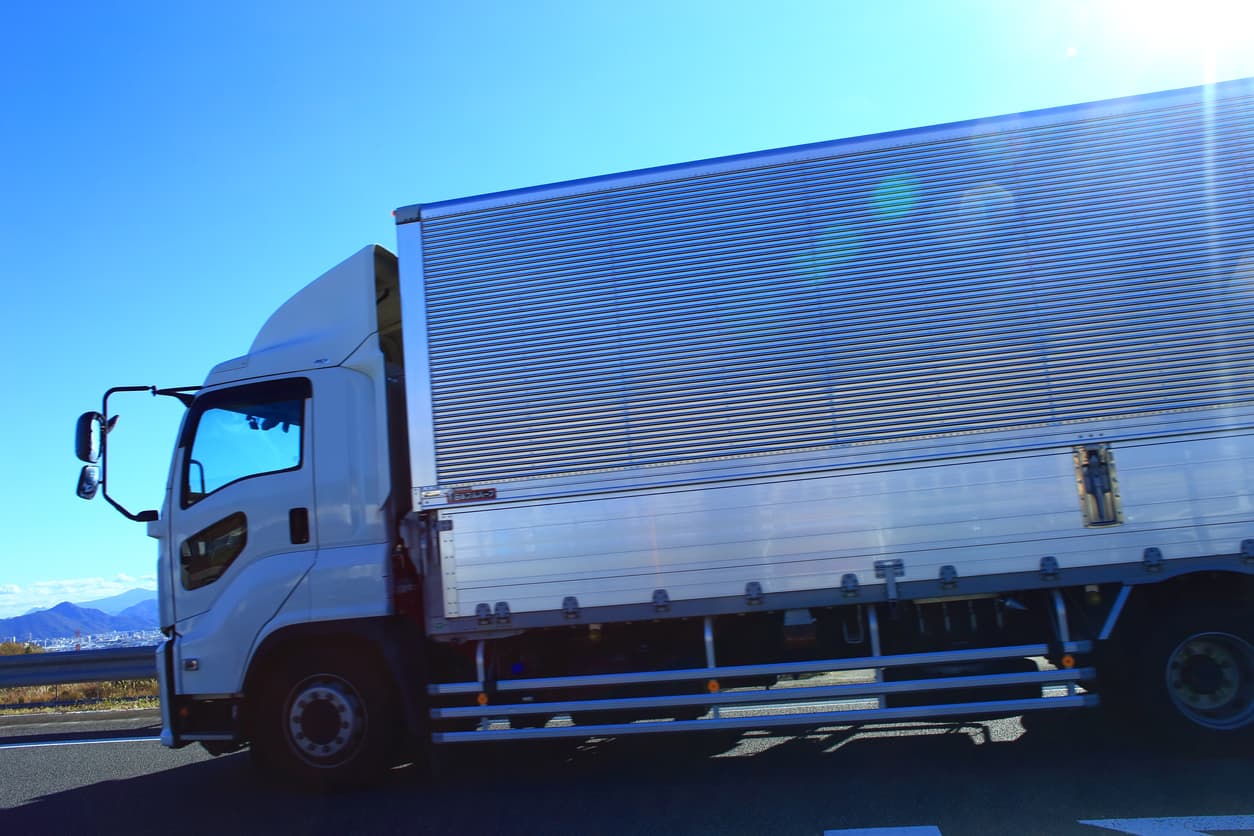
トラックは運送業で運転手として働くために必要です。中型や大型の運転免許の取得には普通免許が前提で、普通免許でどのようなトラックに乗れるかの把握は、できる仕事を知っておくために重要です。
乗れるトラックは、上記で紹介した車の条件と同様に、運転免許の取得時期によって次の3パターンに分かれます。
- 2017年3月12日以降に取得した場合
- 2007年6月2日〜2017年3月11日の間に免許を取得した場合
- 2007年6月1日以前に免許を取得した場合
それぞれの時期での、乗れるトラックの特徴や具体的な車を紹介していきます。
2017年3月12日以降に取得した場合
これから普通免許の試験を受ける人は、最大積載量が2.0トン未満のトラックを運転できます。トラックは寸法や最大積載量で次の3つに分かれています。
| 小型 | 中型 | 大型 | |
| 全長 | 2,500mm以内 | 12,000mm以内 | 12,000mm以内 |
| 全幅 | 2,500mm以内 | 2,500mm以内 | 2,500mm以内 |
| 全高 | 2,500mm以内 | 3,800mm以内 | 3,800mm以内 |
| 最大積載量 | 3トン以内 | 6,5トン以内 | 6,5トン以上 |
| 車両総重量 | 5トン以内 | 11トン以内 | 11トン以上 |
普通免許では、小型トラックの中でも最大積載量が少ない1トンや1.5トンクラスが対象です。日本の大手メーカーで発売中の1.5トントラックでは、トヨタのダイナカーゴやISUZUのエルフ、日野のDUTROなどがあります。
2007年6月2日〜2017年3月11日の間に免許を取得した場合
普通免許の取得時期が2007年6月2日〜2017年3月11日の間だと、最大積載量3トン未満の
トラックを運転できます。販売されているトラックの積載量は、1トンや0.5トン刻みで種類があり、実際は2.5トンクラスまでが対象となります。日本の大手メーカーが販売している車種では、三菱ふそうのキャンターやUDトラックスのカゼットがあります。
2トンクラスのトラックになると、さまざまな種類があり目的によって使い分けたいです。
- 平ボディ:屋根がない荷台がついたトラックで、個人の農家や単身の引越しで活躍
- アルミバン:基本は平ボディと一緒で荷台がアルミで覆われており、小口の配送で使い勝手が良い
- ユニット車:荷台とキャブ(運転席がある部分)の間にクレーンが付いて、建設現場での資材の小運搬で活躍
- ダンプ車:土石の運搬がメインで、荷台が動くため荷物を簡単に降ろせる
- 冷凍車・冷蔵車:冷凍品や冷蔵品の少量配送で役立つ
2007年6月1日以前に免許を取得した場合
運転免許の取得時期が2007年6月1日以前だと、最大積載量は5トン未満で中型トラックが対象に入り、4トンや4.5トンのトラックを運転できます。ISUZUのフォワードや日野のレンジャー、マツダのタイタンなどが該当します。
4トンともなるとトラックの全長は8m越えが一般的で、普通自動車の約2倍になります。同じ運転免許が使えても、運転の感覚は大きく変わり、立体駐車場を利用できないケースもあります。
2022年11月現在では、4.5トン以上のトラックの運転には中型免許の取得が必須で、20歳以上と2年以上の運転経歴が受験条件です。高校卒業後すぐに運送業界への就職を希望していても、運転できるトラックは制限されています。
普通免許に関する注意点

普通免許を取得して実際に運転をするとき、法律違反をすると知らなかったでは済まされません。そこでよくある注意点や罰則を紹介します。
運転できない車を使用すると無免許運転になる
どの車でも基本の仕組みは同じため、たとえば免許を持っていない大型車でも技術的に運転は可能です。しかし普通免許の範囲外のものを運転すると無免許運転になり、次の罰則が課されます。
- 違反点数25点
- 3年以下の懲役か50万円以下の罰金
違反点数が25点だと、過去3年以内に免停などの処分がない人で2年の免許取り消しです。前歴が2回あると3年、3回以上あると4年と長くなります。牽引型のキャンピングカーの利用では、牽引する車両の重量が750kgを超え、サイズは運転する車と牽引車の総全長が12m、幅2.5m、高さ3.8超えになると無免許運転です。
また、無免許の事実を知ったうえで同乗したり車を貸したりした場合、運転幇助罪を課せられます。違反点数はないものの、同等の懲役か罰金を処されることになります。
これから普通免許を取得する人が、上記で紹介した車両総重量や最大積載量、定員を超える車を運転した場合は、無免許運転にはならず免許条件違反となります。違反点数は2点で、15点以上の一発免停は避けられます。しかし違反には変わりないため、仕事でいつもと違う車を運転するときなどは、車検証の車両区分を確認しておくと良いでしょう。
原付は運転できても自動二輪車を運転することはできない
普通免許で運転できるのは50cc以下の原付までで、排気量が増えるとそれぞれ次の免許がないと運転してはいけません。
- 50cc越え125cc以内:普通二輪車免許(小型限定)
- 125cc越え400cc以内:普通二輪車免許
- 400cc越え:大型自動二輪車免許
上記と同様にこちらも無免許運転となり、違反点数や懲役・罰金の対象です。
普通免許につく原付免許の補足で、AT限定しか取得する予定がない人でも、原付はATもMTも両方運転可能です。探すと普通二輪車免許が必要なものと同等のデザインもあり、スクータータイプしか想定していなかった人も選択肢が増えます。
普通免許に関するQ&A

最後にこれから普通免許を取得する人が抱きやすい疑問を、Q&A形式で3つ解説していきます。
運転免許証の色の違いは?
運転免許証には、グリーン、ブルー、ゴールドの3種類があり、それぞれの特徴は次の通りです。
| グリーン | ブルー | ゴールド | |
| 特徴 |
|
|
|
| 有効期限 | 3年 | 3~5年 |
|
| 更新時の講習 | 2時間 |
|
30分 |
普通免許を取得してからなにも違反をしていなければ、更新のたびに色が変わり、8年後にはゴールド免許です。ゴールドになるとグリーンやブルーより、更新の講習は短くなり、更新場所の選択肢が増えます。1年以上無事故・無違反で申請するともらえる、安全運転者の証となるセーフティドライバーカードでは、ゴールド免許のほうが割引などの優遇措置を受けやすいです。
ゴールドでも70歳以上になると、通常の講習だけでは普通免許を更新できません。70~74歳で高齢者講習、75歳以上でさらに認知症検査を受けてください。どちらも更新の有効期限の半年前から受けられます。まだ10代や20代の人にとっては先の話で、実際にその年になるころには制度が変わっているかもしれません。更新のたびに最新の制度をチェックしておきましょう。
普通免許の取得条件は?
普通免許を取得するには、次の7つの条件をすべて満たす必要があります。
- 満18歳以上
- 視力が片眼で0.3以上、両眼で0.7以上(片眼で0.3に満たなくても左右の視野が150度あれば良い
- 赤・青・黄色の識別が可能
- 90デシベルの警音器の音が10mの距離で聞こえる(補聴器も使用可能)
- 運転に支障がでる身体障害がない(義手や義足は関係なし)
- 免許センターで学科試験に合格
- 免許センターの技能試験か教習所の卒業試験に合格
視力に関しては、裸眼で条件を満たせない場合は、メガネやコンタクトレンズを使用可能です。矯正ありだと運転免許証には、眼鏡等と条件が付きます。運転するときは必ず矯正した状態で安全を確保してください。
運転免許の取得にかかる費用は?
普通免許の取得方法は次の2つがあり、費用は大きく変わります。
- 免許センターで学科と技能の試験に合格
- 教習所を卒業して免許センターで学科の試験に合格
いきなり免許センターで学科と技能の試験を受ける場合、試験手数料、車両使用料、交付手数料、取得時の講習費用の合計で2万円程度になります。地域によって費用は変わるため、普通免許を取得する地域の警察署のホームページなどで確認してください。
教習所を利用する場合は、卒業するまでにMTで20~30万円程度かかり、AT限定だと1~2万円安くなる傾向です。また、4~6月や10~12月といった閑散期や合宿を利用すると費用を抑えられます。免許センターで学科試験だけ受ける場合は、試験手数料や交付手数料で数千円かかります。
普通免許と同じ年齢で取得できる準中型免許の場合、教習所を利用すると費用は10万円程度上がり30~40万円が目安です。普通免許を取得後に教習所に通うと、追加で20万円程度費用になります。4トントラックの運転予定がある人は、最初から準中型免許の取得を目指したほうが節約できます。
自分が乗れる車の範囲を把握しておこう
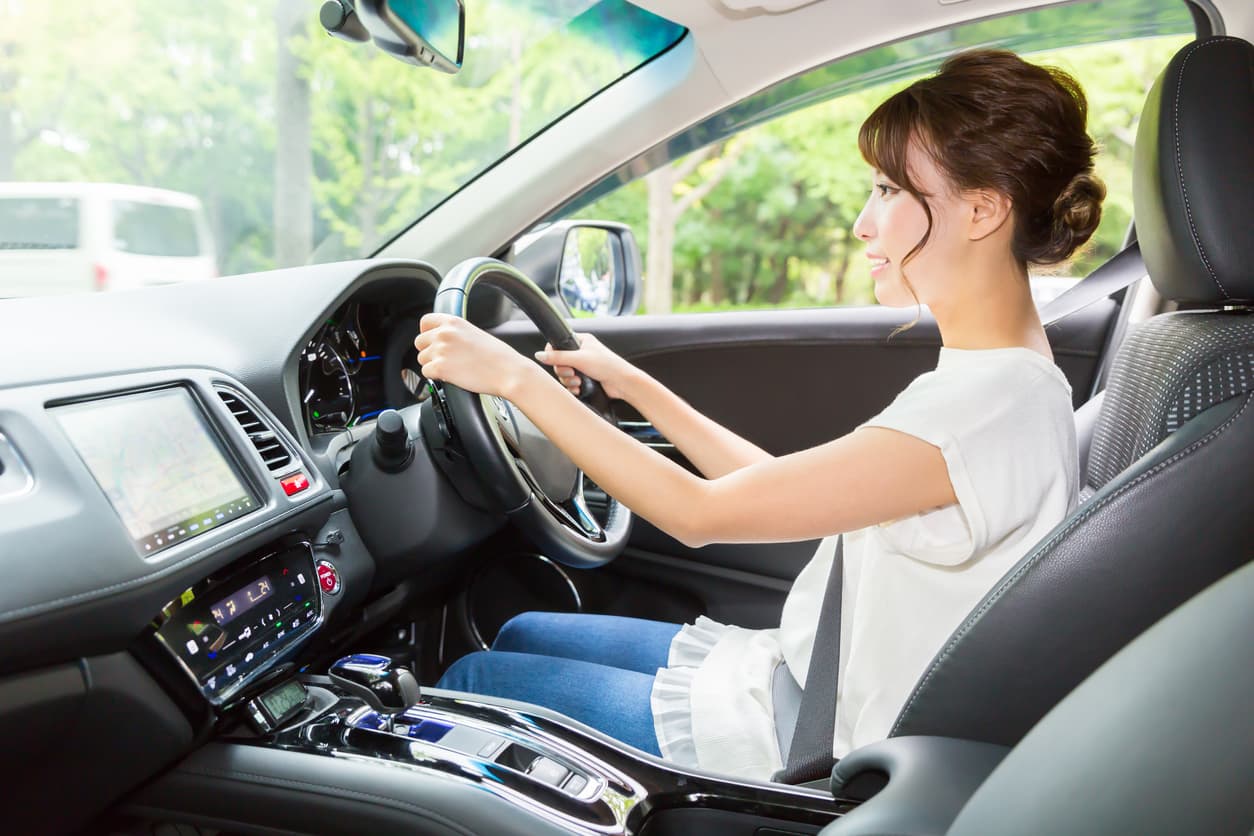
これから普通免許を取得する人が乗れる車は、車両総重量3.5トン未満、最大積載量2.0トン未満、定員は10人以下が条件です。普通自動車や小型特殊自動車、原付が対象となり、条件を満たしている1トンや1.5トンクラスのトラックも運転可能です。
乗れる車の範囲を把握しておけば、購入する車種や選べる仕事の選択肢が広がります。本記事で紹介した条件や車の種類は、2022年11月時点のものです。いつ道路交通法が変更されるかわからないため、普通免許を取得するときは、最新の情報をチェックして希望を満たせるか確認してから、教習所選びや試験の勉強をしてください。




